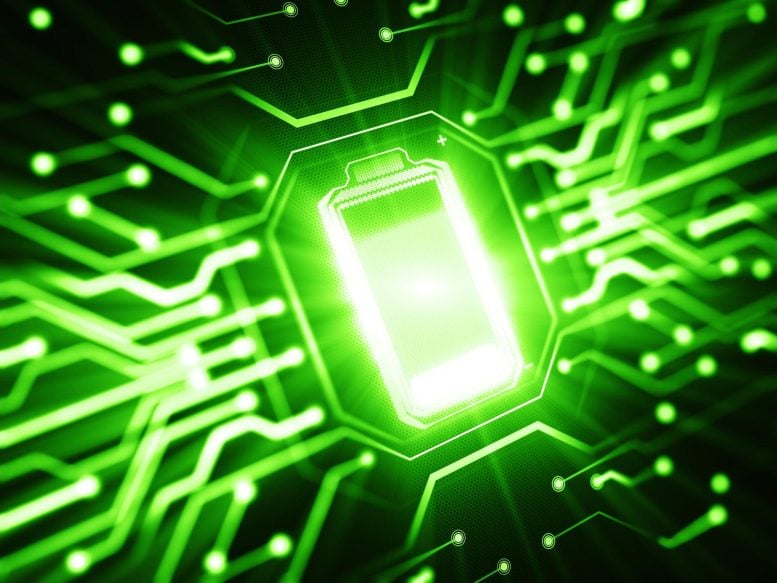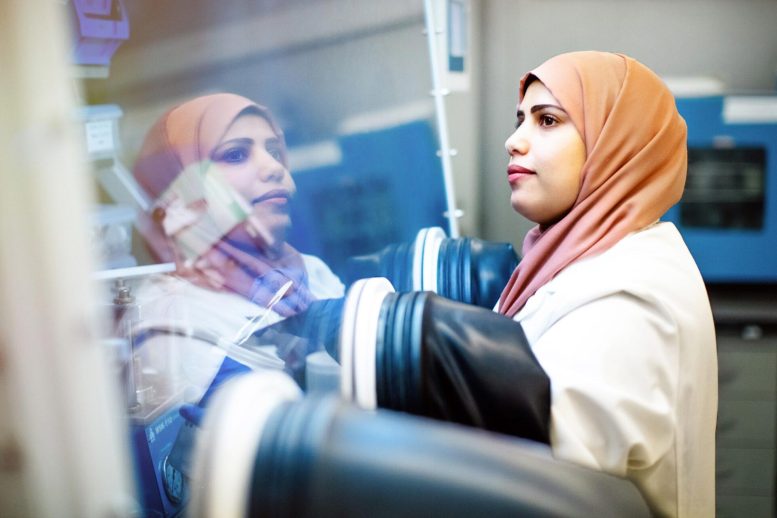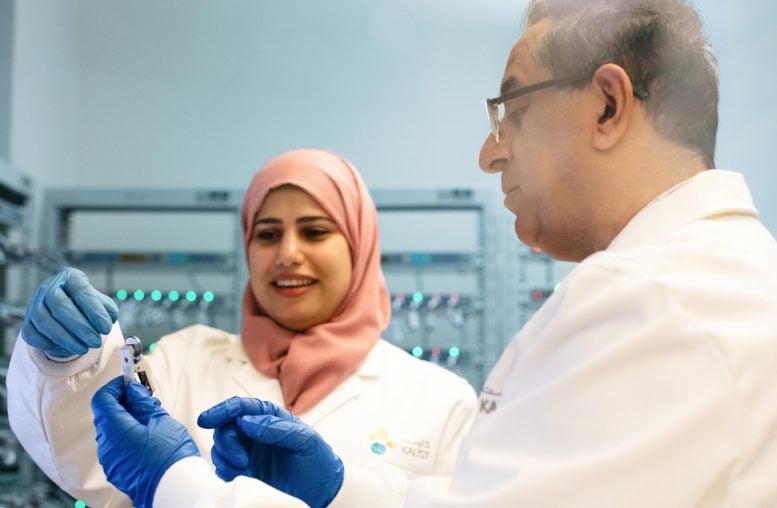Researchers at KAUST have made strides in the realm of renewable energy storage by utilizing laser pulses to improve MXene, an electrode material. Traditional MXene faces performance degradation over time, largely due to the formation of molybdenum oxide. However, with the introduction of laser-crafted nanodots, MXene showcased enhanced lithium storage and faster charging. Notably, in testing, the material experienced a four-fold rise in storage capacity, rivaling that of graphite, without any observed capacity loss.
Researchers used laser pulses to enhance MXene’s electrode properties, leading to a potential breakthrough in rechargeable battery technology that could surpass traditional lithium-ion batteries.
As the global community shifts towards renewable energy sources like solar and wind, the demand for high-performance rechargeable batteries is intensifying. These batteries are essential for storing energy from intermittent renewable sources. While today’s lithium-ion batteries are effective, there’s room for improvement. Developing new electrode materials is one way to improve their performance.
Zahra Bayhan is developing batteries that incorporate MXenes, which could provide a substitute for graphite in some batteries thanks to its excellent conductivity. Credit: © 2023 KAUST; Anastasia Serin
MXene: A Promising Electrode Material
Researchers at King Abdullah University of Science & Technology (KAUST) have demonstrated the use of laser pulses to modify the structure of a promising alternative electrode material known as MXene, boosting its energy capacity and other key properties. The researchers hope that this strategy could help to engineer an improved anode material in next-generation batteries.
Graphite contains flat layers of carbon atoms, and during battery charging, lithium atoms are stored between these layers in a process called intercalation. MXenes also contain layers that can accommodate lithium, but these layers are made of transition metals such as titanium or molybdenum bonded to carbon or nitrogen atoms, which make the material highly conducting. The surfaces of the layers also feature additional atoms such as oxygen or fluorine. MXenes based on molybdenum carbide have particularly good lithium storage capacity, but their performance soon degrades after repeated charge and discharge cycles.
Find out how KAUST researchers are helping to develop the next generation of rechargeable batteries. Credit: © 2023 KAUST; Anastasia Serin
Addressing Performance Degradation
The team, led by Husam N. Alshareef and Ph.D. student Zahra Bayhan, discovered that this degradation is caused by a chemical change that forms molybdenum oxide within the MXene’s structure.
To tackle this problem, the researchers used infrared laser pulses to create small “nanodots“ of molybdenum carbide within the MXene, a process called laser scribing. These nanodots, roughly 10 nanometers wide, were connected to the MXene’s layers by carbon materials.
This offers several benefits. Firstly, the nanodots provide additional storage capacity for lithium and speed up the charging and discharging process. The laser treatment also reduces the material’s oxygen content, helping to prevent the formation of problematic molybdenum oxide. Finally, strong connections between the nanodots and the layers improve the MXene’s conductivity and stabilize its structure during charging and discharging. “This provides a cost-effective and fast way to tune battery performance,” says Bayhan.
Zahra Bayhan and Professor Husam Alshareef think that laser scribing could be applied as a general strategy to improve the properties of other MXenes. Credit: © 2023 KAUST; Anastasia Serin
Promising Results and Future Applications
An anode created from this laser-scribed material was subjected to testing in a lithium-ion battery over 1000 charge-discharge cycles. Remarkably, with the nanodots, the material exhibited a four-fold surge in electrical storage capacity compared to the unaltered MXene, nearly matching graphite’s theoretical peak capacity. Moreover, this laser-modified material retained its full capacity throughout the testing phase.
The team believes that laser scribing could be applied as a general strategy to improve the properties of other MXenes. This could help to develop a new generation of rechargeable batteries that use cheaper and more abundant metals than lithium, for example. “Unlike graphite, MXenes can also intercalate sodium and potassium ions,” explains Alshareef.
Reference: “A Laser-Induced Mo2CTx MXene Hybrid Anode for High-Performance Li-Ion Batteries” by Zahra Bayhan, Jehad K. El-Demellawi, Jian Yin, Yusuf Khan, Yongjiu Lei, Eman Alhajji, Qingxiao Wang, Mohamed N. Hedhili and Husam N. Alshareef, 14 May 2023, Small.
DOI: 10.1002/smll.202208253
>>> Read full article>>>
Copyright for syndicated content belongs to the linked Source : SciTechDaily – https://scitechdaily.com/laser-powered-leap-mxene-and-the-future-of-rechargeable-battery-technology/


































